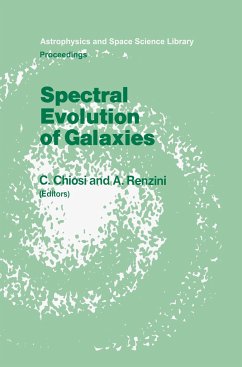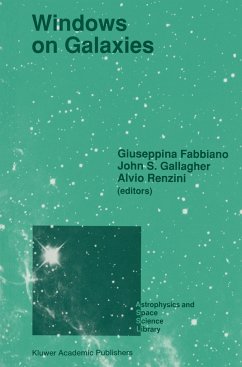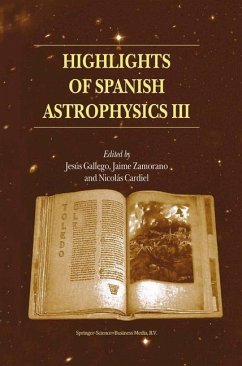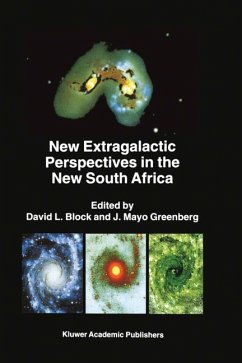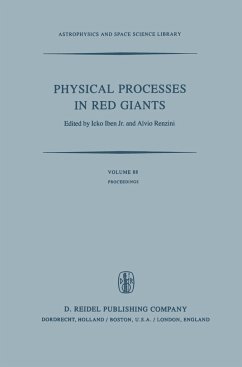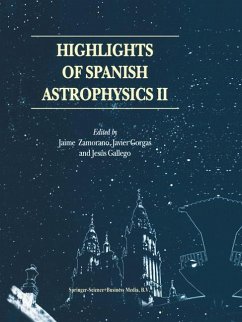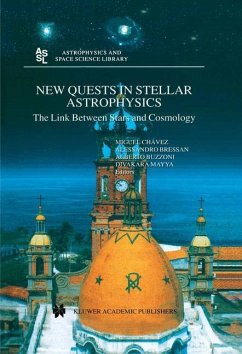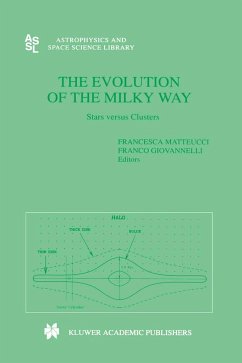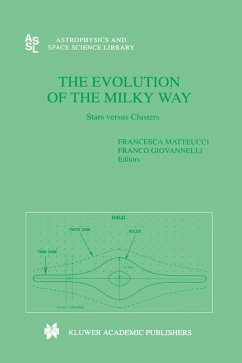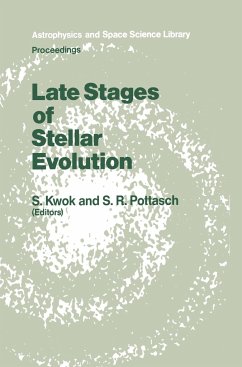
Spectral Evolution of Galaxies
Proceedings of the Fourth Workshop of the Advanced School of Astronomy of the "Ettore Majorana" Centre for Scientific Culture, Erice, Italy, March 12-22, 1985
Herausgegeben: Chiosi, Cesare; Renzini, Alvio
Versandkostenfrei!
Versandfertig in 1-2 Wochen
153,99 €
inkl. MwSt.

PAYBACK Punkte
77 °P sammeln!
As it was said by one of the participants to this workshop" In our attempts to understand the spectral evolution of galaxies, we are fortunate indeed to have the ability to look back in time and observe galaxies as they were billions of years ago. Perhaos in no other discipline is it possible to gain such a direct view to hJstory. The galaxies we seek to study are remote, their light faint, and thus only recently has it become technicaJlv feasible to sample the spectra of normal luminosity galaxies at lookback times of five billion years or more" .... or, perhaps. even to see galaxies in the p...
As it was said by one of the participants to this workshop" In our attempts to understand the spectral evolution of galaxies, we are fortunate indeed to have the ability to look back in time and observe galaxies as they were billions of years ago. Perhaos in no other discipline is it possible to gain such a direct view to hJstory. The galaxies we seek to study are remote, their light faint, and thus only recently has it become technicaJlv feasible to sample the spectra of normal luminosity galaxies at lookback times of five billion years or more" .... or, perhaps. even to see galaxies in the process of their formation. or shortly afterwards. This fourth workshop organized by the "Advanced School ot Astronomy was indeed centered on the "Spectral Evolution of Galaxies". on reviewing and discussing the relevant astrophysical processes and on assessing our current ability to model and understand the evolution of stellar populations. Following an opening session dealing with some outstanding questions of galaxy evolution. Session I addressed the specific problems of galaxy and star formation processes. topics of uncertainty and controversy to which IRAS observations may give novel perspectives. The properties of stellar populations in the local group of galaxies formed the basis of Session II. Session III dealt with the fundaments of the theory of spectral and photometrical evolution of stellar populations. and with recent developments in the theory of stellar structure. a necessary step to model and understand galactic evolution.





